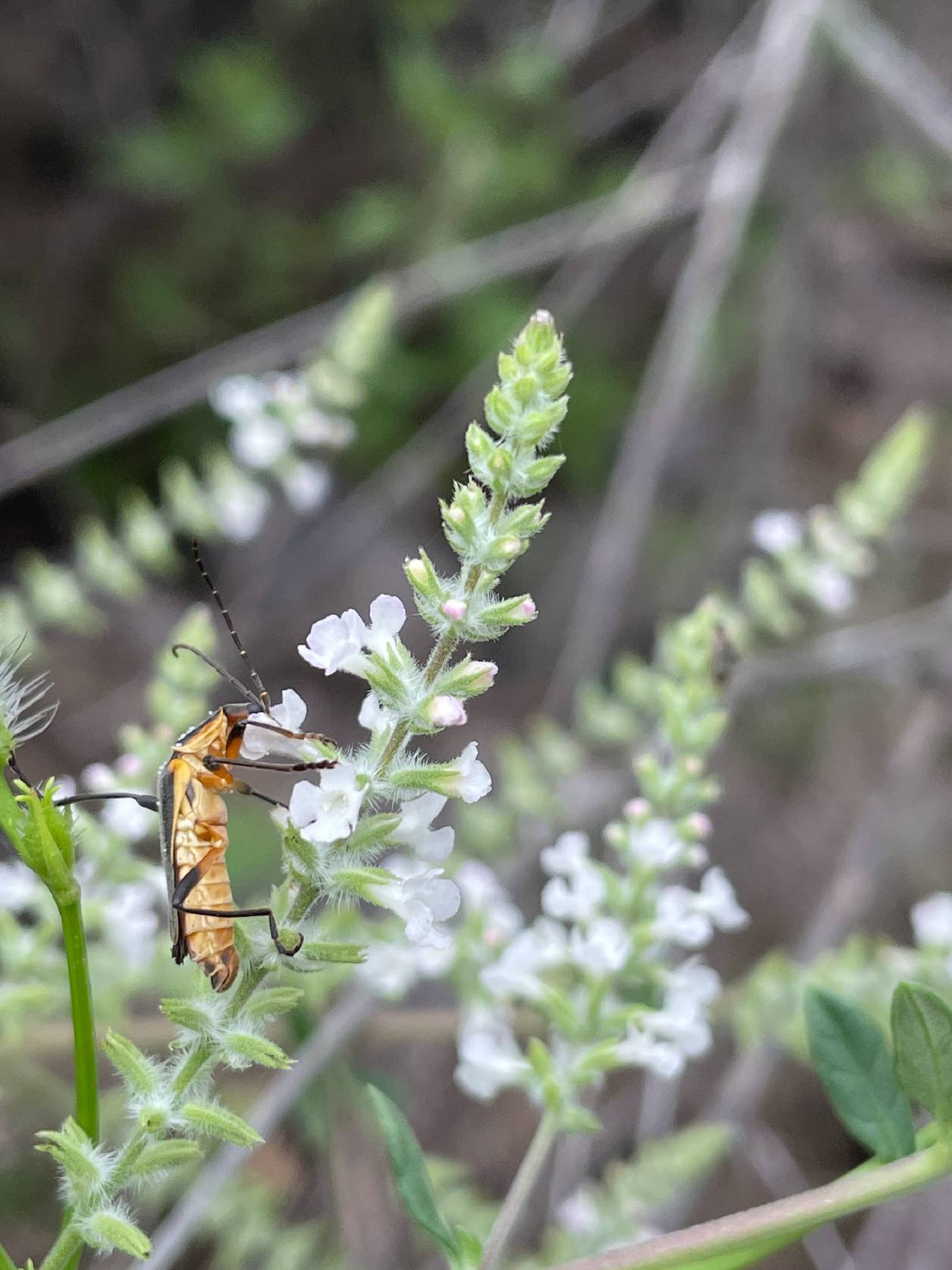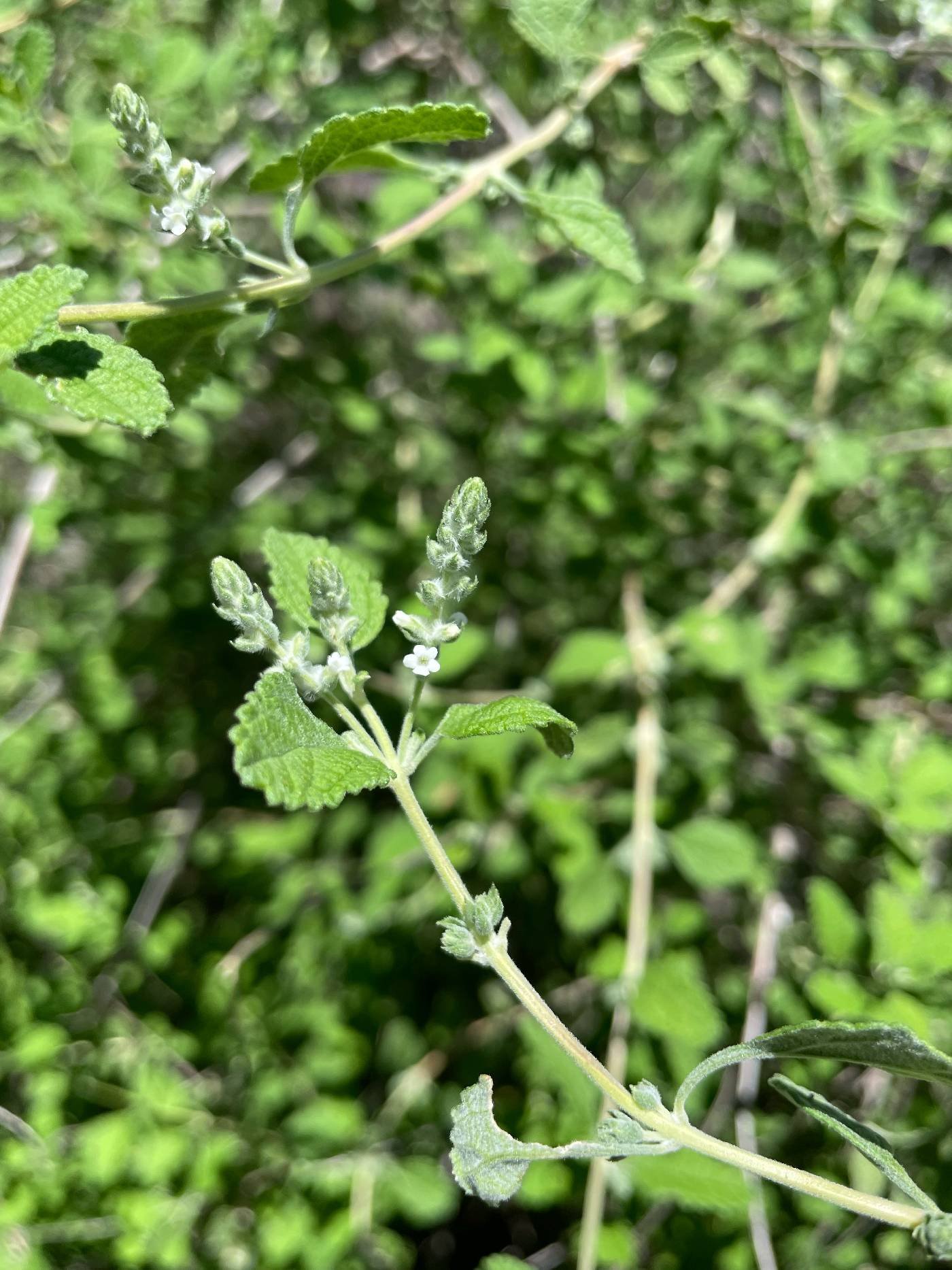The Genus Aloysia
Verbenaceae: Vervain Family
This is a genus of 41 species in the Verbenaceae (verbena family). They are native to the Americas, where they are distributed in temperate climates, as well as in subtropical and desert climates. Our species are shrubs, but there are some that are trees in the tropics.
A famous Aloysia that can be found in the trade, and sometimes available at our nursery, is lemon verbena (Aloysia citrodora).
Aloysia gratissima
Beebrush
Upright shrub, usually evergreen in the low desert, semi-deciduous in the higher elevations, growing up to about 6’ tall and just a bit less wide. Plants reseed readily in the landscape. Blooms dependably anytime in the warm season, sometimes even in the cool season, with vanilla scented sprays of white flowers.
Full sun to bright shade, moderate water when established, hardy to about 15°F.
A very good pollinator plant with fragrant flowers most of the year. Many granivorous birds like goldfinches love to eat the seeds. Many butterflies and bees are served with its nectar-rich flowers. Browsed by wildlife.
Used by people topically to treat wounds in South America. A great plant for domestic beekeepers.
Found in rocky or gravelly hills, sandy or limestone soils, and arroyos, around 3,000-4,000 ft. in southern Arizona to west Texas; south through Mexico into South America.
Aloysia is named in honor of Maria Louisa Teresa, 1751-1819, Princess of Parma and wife of King Carlos IV of Spain; gratissima means very pleasing.
Aloysia wrightii
Oreganillo
Very fragrant, semi-deciduous shrub growing to about 5’ tall and wide. Dependable bloom season (if in full sun) from August into fall with fragrant white flowers. Short dormancy if it goes dormant in the upper elevations.
Plant in full to part sun, moderate to low water when established, hardy to about 20°F.
Highly attractive to nectar-feeding insects. Granivorous birds consume the seeds.
Used by people like Mexican oregano—strong flavor holds up well in spicy cuisines like Mexican or Indian. Good crop for domestic bees. Used to treat headaches, rheumatism, distemper, and gonorrhea; also drunk as a tea.
Aloysia is named in honor of Maria Louisa Teresa, 1751-1819, Princess of Parma and wife of King Carlos IV of Spain; while wrightii is named for Charles Wrighti (1811-1885), an American botanical collector who was part of the Mexican boundary survey.
Found on rocky or gravelly slopes in canyons from 1,500-6,000 ft. in southern California, southern Utah, Arizona, New Mexico, southern Texas; south into northern Mexico.


